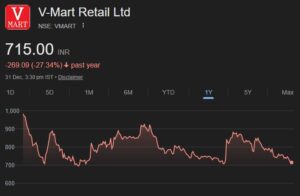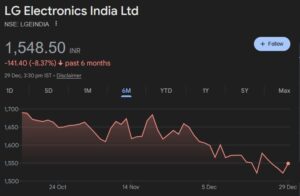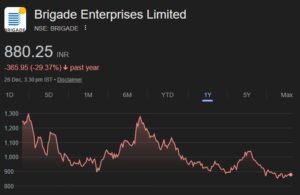LinkedIn’s shares are soaring on the stock market. 64 percent this year. It is expected to gross $895 million and net $70 million, up 71 percent and 100 percent, respectively, from 2011.
Forbes India has an interesting article on how LinkedIn makes so much money. Some excerpts:
That’s when Weiner’s bull’s-eye emerged. Rather than try to wring 20 bucks here and there from individual users, he refocused the company on selling a vastly more powerful service to corporate talent scouts, priced per user at as much as $8,200 a year. Today thousands of companies use LinkedIn’s flagship Recruiter product to hunt for skilled achievers. In human resources departments having your own Recruiter account is like being a bond trader with a Bloomberg terminal— it’s the expensive, must-have tool that denotes you’re a player.
There’s no better way to understand LinkedIn’s quiet savvy, in the midst of Facebook’s noisy clatter, than to compare the two sites’ financial efficiency. Compare the revenue the rivals collect for every hour that each user spends on either site. LinkedIn’s tally: $1.30. Facebook’s: a measly 6.2 cents.
One could argue that it’s better to have a small slice of something massive than a big slice of something smaller. But the numbers above are further skewed by a simple fact: Facebook, which derives 85 percent of its revenue from advertising, makes money only when you’re on Facebook. Once you sign up for LinkedIn, the social network monetises your information, not your time. Mark Zuckerberg can crow about how his users spend, on average, 6.35 hours per month on Facebook versus 18 minutes for LinkedIn. But Facebook users may click on only one of every 2,000 ads. Ask yourself which model seems more sustainable.
These dynamics will get further magnified as the Web goes mobile. It’s hard to deliver ads to tablets and smartphones. At LinkedIn, where 22 percent of visits now come from mobile devices—versus 8 percent a year ago—this surge just means more of the kind of interactions and data that it can monetise.
…..
Much as LinkedIn’s long-term model makes sense, its near-term success stems from a manic dedication to selling services to people who buy talent for a living. During Weiner’s tenure LinkedIn has developed an intense, sales-focused culture in which new-account wins are celebrated by name at biweekly all-hands meetings. The best frontline salespeople for hot products such as Recruiter can earn $400,000 a year. And unlike at other Silicon Valley companies, where engineers rank as alpha dogs, LinkedIn’s salespeople pull off the most daring stunts. Sales-effectiveness leader Nate Bride once dyed his hair blue to match the LinkedIn logo—and shaved small parts of his skull to spell out the company name.
LinkedIn has doubled the number of sales employees in the past year, with the company now spending 33 percent of revenue on sales and marketing. That’s a startling number for a social network, more akin to the relentlessly hawking enterprise-software crowd. Oracle and Microsoft spend 20 percent of revenue on sales. Facebook spends 15 percent; Google is at 12 percent. But Weiner makes no apologies. Each time the company has expanded its sales team for Recruiter and other hiring-solu- tions products, he says, the payoff has been “off the charts.” Sales keep surging, and existing customers keep spreading their enthusiasm for what LinkedIn has to offer. And once these sales are made, the customer becomes low maintenance and recurring. People familiar with selling Recruiter say LinkedIn keeps 95 percent of its big-company accounts each year. For smaller accounts the number is more like 80 percent. “I’m happy to invest,” Weiner says. “My concern was how quickly we could hire and still maintain quality.”
……….
……………
Today Adobe leases 70 Recruiter seats. A typical user is Trisha Colton, who leads Adobe’s hunt for digital media executives. On a recent afternoon she needed to fill five positions. With a few clicks of the mouse on her ThinkPad laptop, she could tailor a project-manager search that enabled her to look at possible candidates from 21 leading ad agencies, 15 publishing outfits and a host of other suitable backgrounds.
A few more tweaks of the dial and Colton had specified what current jobs these people should be holding, how many years of experience they should have and their locations. Moments later she had a list of 148 prospects. Recruiter informed her which candidates already knew peo- ple at Adobe, at least slightly. Colton could use that information to help open a dialogue. If no ties existed, she could use LinkedIn’s modified e-mail system to approach each candidate. “We’re saving millions of dollars this way,” Vijungco says. Search agencies now get less than 2 percent of Adobe’s business in the Americas.
………….
As LinkedIn’s membership rocketed past 20 million in 2008, a winning business model began to take shape. Now LinkedIn’s database was rich not just with Silicon Valley programmers and venture capitalists but also with Wall Street traders, Texas geologists and highly skilled professionals of all callings outside the US Talent hunters were ready to pay big-time for a chance to connect with the entire LinkedIn community.
One of the first people who tried to sell the newly coined Recruiter service to big companies was Nathan Egan, a Villanova graduate now running PeopleLinx, a social business solutions company. While at LinkedIn he took on the greater Philadelphia territory in late 2008. Egan started selling Re- cruiter at $5,000 a seat, worried that customers would balk at the price.
“But banks didn’t mind,” Egan recalls. “Consulting firms didn’t mind at all.” Within a month LinkedIn had handed Egan a revised price sheet. Now the minimum order was three seats, at a total cost of $21,000.








